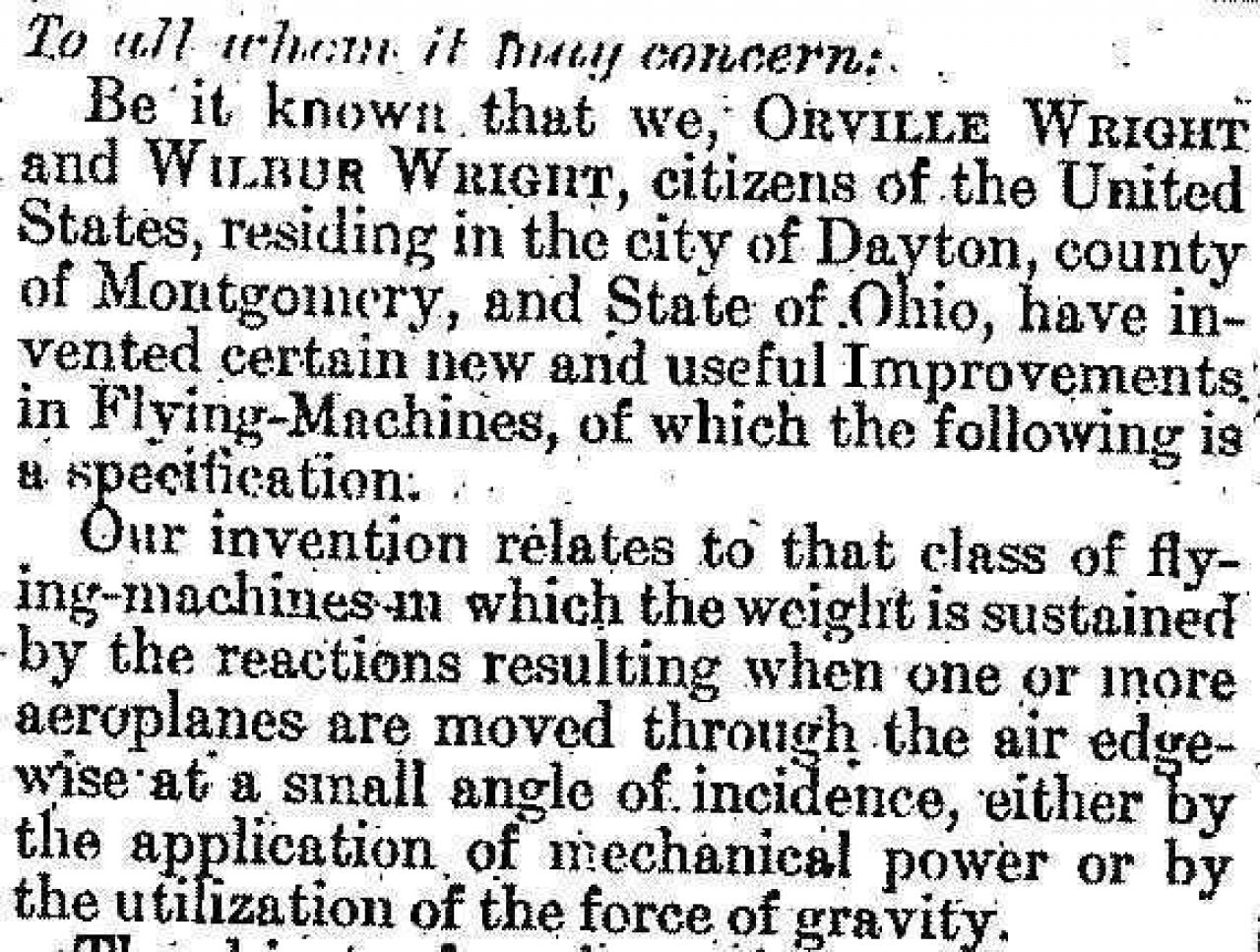The Wright Brothers: Aviation Pioneers
The Orville brothers were embroiled for years over the ownership of their patent, but we have come to associate them with the invention of the airplane.
Dayton, Ohio May 22, 1906. Two brothers who shared a background in bicycle manufacturing successfully patented their ideas for new and useful improvements in flying machines. Those brothers were Orville and Wilbur Wright, and though they would be embroiled for years over the ownership of their patent, we have come to associate them with the invention of the airplane.
Wilbur (born in 1867) and Orville (born in 1871) were two of seven children born to Milton and Susan Wright. Once, when the two were boys, their brought them a flying toy, some have called it a helicopter, designed by French aviation innovator Alphonse Pnaud. The toy copter entranced the boys, who played with it endlessly, or at least until it broke, at which point they studied the parts and constructed one of their own.
Both brothers would attend high school, but without graduating. Neither would ever marry. Though Wilbur had finished his four years of school, his family's sudden move from Virginia to Ohio at the time of his graduation prevented him from being credited with it. When Wilbur was old enough to go to college, he instead remained at home, assisting his mother who was dying of tuberculosis. In 1889, Orville left school before his senior year, deciding to start his own publishing shop after successfully creating and constructing his own printing press. Wilbur soon joined his brother's enterprise, and they established a weekly paper: The West Side News.
in 1892, the brothers capitalized on the popularity of bicycles and opened their own shop, both selling and repairing bicycles. They would launch their own brand of bicycles in 1896. However, throughout all of these endeavors, the brothers shared an enduring fascination with flight. Paying close attention to the trials and failures of aeronautical like Samuel Langley, Octave Chanute, and Otto Lilienthal. The brothers plotted together to find a way not only to fly for them, but control one's journey in the air.
Over the next several years, Wilbur and Orville puzzled over varying glider designs, experimenting with wing sizes and positions. In 1900, they took their work to Kitty Hawk, North Carolina to begin trying their prototypes and ideas in the field. Their earliest models closely resembled box kites, and continued to evolve over time. In 1903, they built their first motorized aircraft, the Wright Flyer I, equipped with hand-carved wooden propellers and a specially built gasoline engine. They successfully manned the first motorized airplane flight, Orville was at the controls, on December 17, traveling 120 feet in 12 seconds, and managing to go a whopping 6.8 miles per hour.
The Wright brothers would continue to innovate in aviation. They applied for a patent on their glider in 1903, but their first application was rejected; they applied again with the help of a lawyer in 1904, and on May 22, 1906, their patent was granted. Other early aviators like Glenn Curtiss, an associate of Alexander Graham Bell, contested the Wrights' claims. The brothers would fight over their patent for years, up through the early death of Wilbur in 1912 at the age of 45. Orville would often cite their patent war as contributing to his brother's early demise.
Orville did not share his brother's taste for business, so in 1915 he sold the corporation he and Wilbur had formed several years previous. After piloting his last flight in 1918, Orville retired from aviation, spending the rest of his life serving in an advisory capacity for such organizations as the National Advisory Committee for Aeronautics (which would eventually become NASA).

 Member Connect
Member Connect